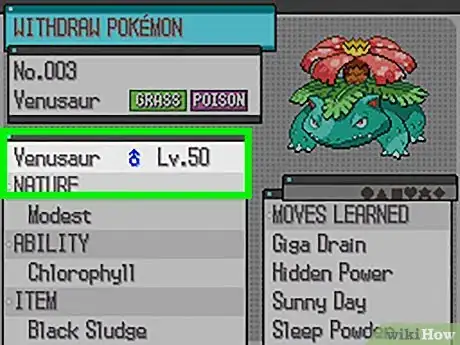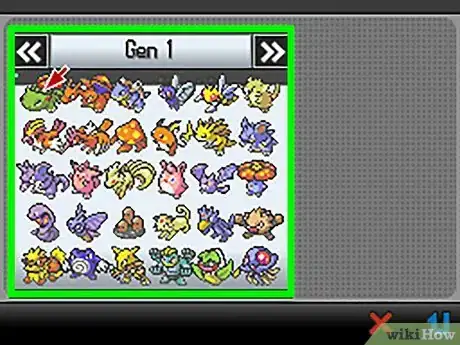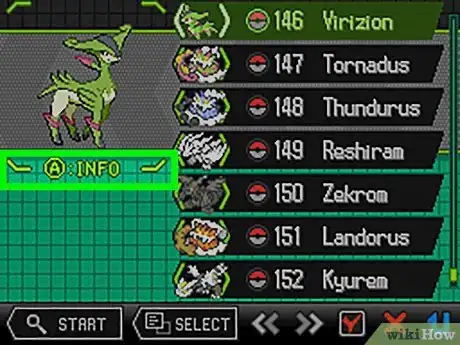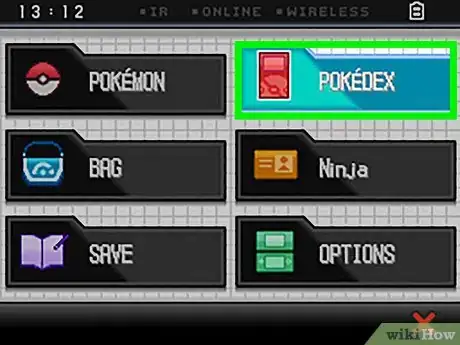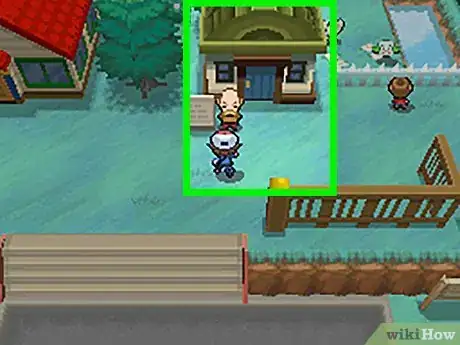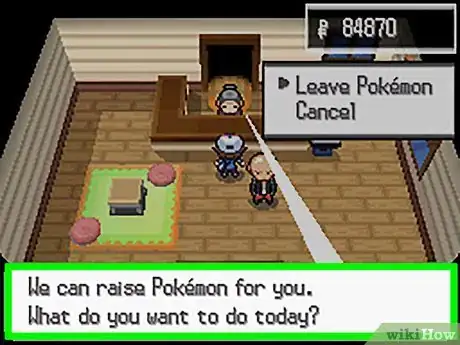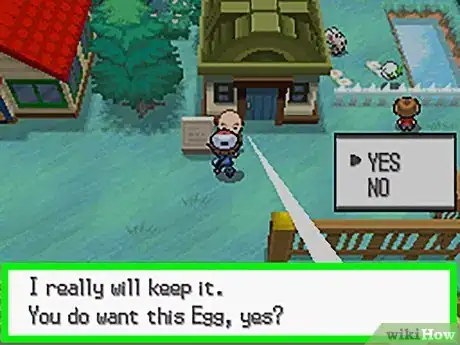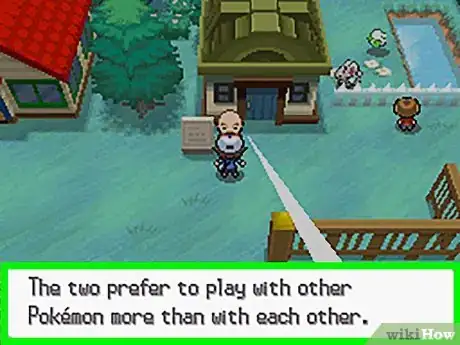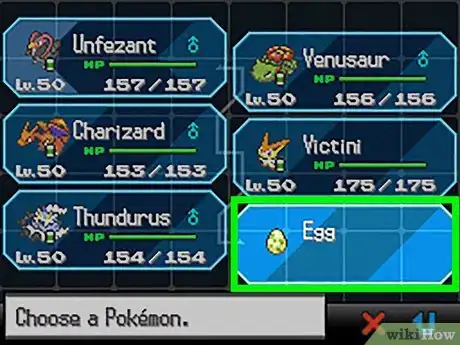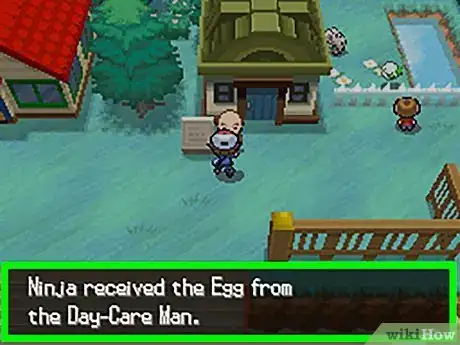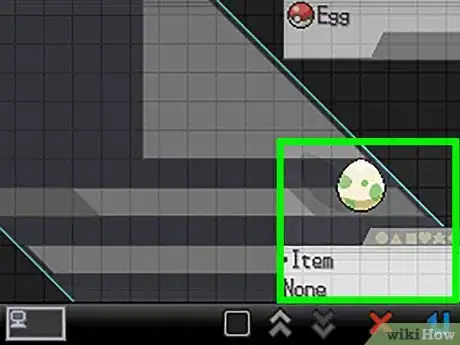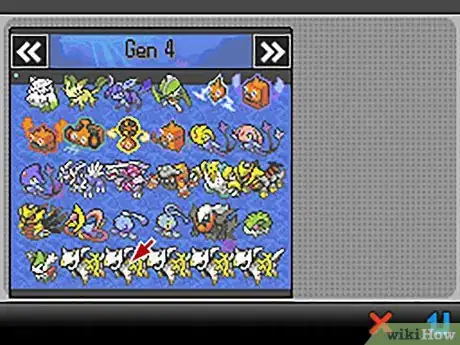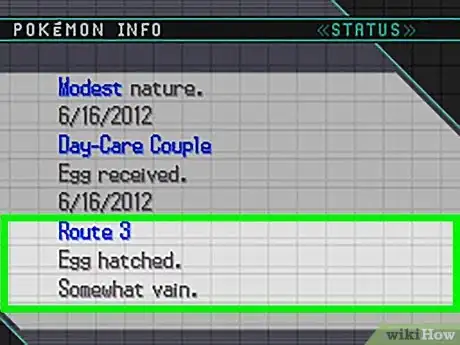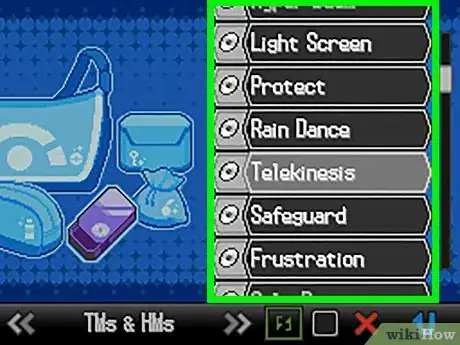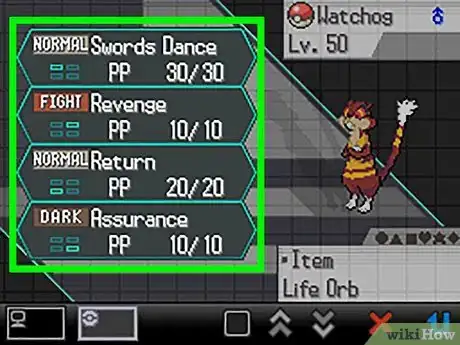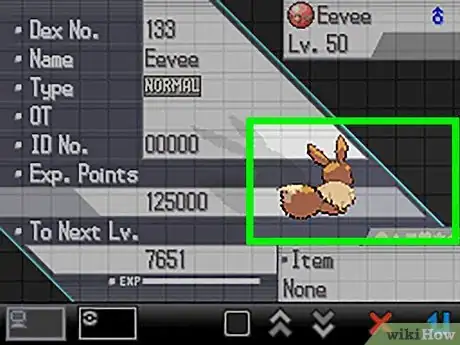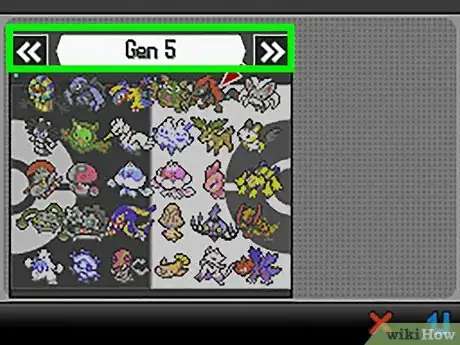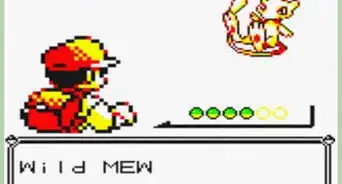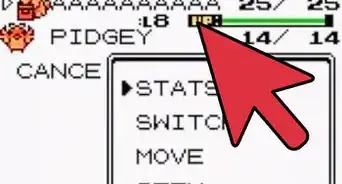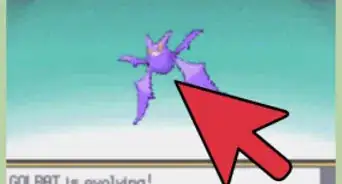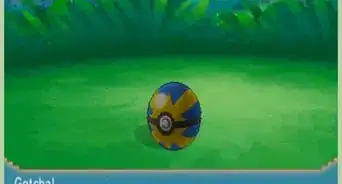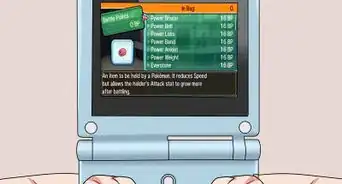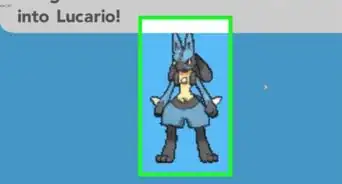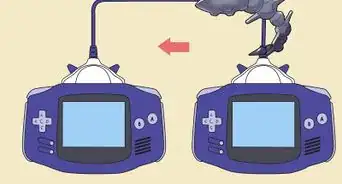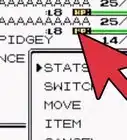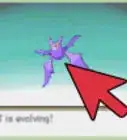This article was co-authored by Madeleine Flamiano. Madeleine Flamiano is a Role-playing Game Enthusiast based in Berkeley, California. She has over 20 years of gaming experience and is an avid gamer in all parts of her life—she's especially fond of tabletop board games and the world of Pokémon. Pokémon Crystal Version is her favorite game in the franchise. Some of her greatest feats were evolving Eevee to a Level 99 Umbreon and collecting every legendary bird Pokémon. Her professional path started at NaNoWriMo, where she scripted a summer-long world-building series and hosted its Virtual Write-Ins. She has written seven books for DDCO Publishing, which specializes in LitRPG and is operated by New York Times Bestseller JA Cipriano. She has ranked in the Top 100 list for Dark Fantasy, Sword & Sorcery, and Fantasy Romance. She was voted by her peers as "The Perfectionist" on Roleplay Adventures, a SERP for forum roleplaying. Madeleine graduated from Mills College with a B.A. in English with a concentration in Literature and a Minor in Philosophy.
There are 11 references cited in this article, which can be found at the bottom of the page.
This article has been viewed 489,825 times.
The baby forms of most Pokémon are difficult to find in the wild, but luckily trainers can make them themselves with a little patience and forethought. Breeding Pokémon may seem like a guessing game, but there is actually a logic behind which Pokémon will breed with which. Note, however, that you can only breed Pokémon in the Generation 2 games or higher, meaning all games except for Pokémon Red, Blue, Yellow, or Green.[1]
Steps
Determining if Two Pokémon Can Breed
-
1Check a Pokémon's gender and summary. Though it seems obvious, you need a male and a female Pokémon to make an egg. You can check your Pokémon's gender by clicking "Pokémon" from the menu, then selecting a Pokémon by clicking the "A" button. From here you will get a variety of information about your Pokémon, including gender and statistics. The information necessary for breeding includes:
- Gender: The Pokémon you breed will be the same species as the mother every time. The only exception is when Ditto breeds with a pokemon, as this will always result in a non-Ditto egg. You will generally need a male and female Pokémon to breed, although Ditto can breed with any pokemon, male, female, or genderless.
- Nature: This affects a Pokémon’s statistics as they increase. One state (speed, attack, etc.) will be in red and grow more quickly than normal, while another will be in blue and grow more slowly than normal. Some of these traits are passed down. However, the exception to this is when using a Ditto to breed.
- Summary: This little paragraph actually predicts what qualities your baby Pokémon will have. Each sentence corresponds to the baby Pokémon's hidden states, called Individual Values, or IV. Each parent passes down 3 of a baby's 12 total stats.
-
2Know that Pokémon of the same species can always breed. Two Pokémon that are the same species share the same name. Thus, two Bulbasaur will always breed with each other to produce another. There are a few exceptions to this rule, as baby Pokémon and Legendary Pokémon (Articuno, Ho-Oh, Entei) cannot ever breed. There are a few other exceptions as well, as these Pokémon cannot breed.:
- Any "baby" Pokémon.
- Nidorina and Nidoqueen.
- Cosplay Pikachu
- Unown[2]
Advertisement -
3Learn about different egg groups. Pokémon do not have to be the exact same species in order to breed. There are several large categories, made up of similar Pokémon, that are all able to interbreed. Two Pokémon of the same egg group can breed as long as one is male and the other is female. These groups are complex and often overlapping, allowing trainers variety when breeding Pokémon. A complete list of egg groups can be found here.[3]
- When breeding two different species, the baby Pokémon always will be the same species as the mother. But if a Ditto was used to make the egg, the baby will never be a Ditto.
- Egg groups are largely determined by appearance: there is a Plant Group, a Flying Group for birds, and a Human-Like Group for Pokémon that walk on two legs.
- Pokémon only need to share one egg group to be compatible.
- Pokémon in the Undiscovered Egg Group cannot breed.
-
4Know that a Ditto can breed with almost any Pokémon. The shape-shifting, genderless Pokémon Ditto can be used to mate with Pokémon from all egg groups excepting the Undiscovered and Ditto groups.
Obtaining an Egg
-
1Head to the game's Pokémon Daycare. The Daycare is where you leave your Pokémon to gain levels automatically. It is also a place to leave two compatible Pokémon so that they have the privacy to begin egg-making. Find your game's Daycare and talk to the Old Man out front to begin breeding.
- In Ruby/Sapphire/Emerald, it is to the left of Mauville.
- In FireRed/LeafGreen, it is on Route 5.
- In Diamond/Pearl/Platinum, it is in Solaceon town.
- In Heart Gold/Soul Silver, it is near the entrance to Goldenrod City.
- In Black/White it's on Route 3.
- In X/Y it's on Route 7.
- In Omega Ruby/Alpha Sapphire it is the same as the Ruby/Sapphire/Emerald games but there is also one in the battle resort[6]
- In Sun/Moon it is in Paniola Ranch.
-
2Place two compatible Pokémon in the Daycare together. You need to leave one female and one male from the same egg group together in order to have a chance at breeding them. Again, the exception is with Ditto as it can breed with any egg group and any gender (besides the Undiscovered Egg Group). Put the two Pokémon in your party and then talk to the Daycare staff to leave the Pokémon at the Daycare.
-
3Understand the probabilities of getting an egg. The Original Trainer (OT) of the Pokémon (whoever caught or bred it) and whether or not the Pokémon are the same species, determines how quickly you will receive an egg. The fastest way to get an egg is to breed two Pokémon of the same species with different OTs. This will give you a 70% chance of producing an egg every 256 steps.
- Pokémon from different trainers have a higher probability of producing an egg.
- Pokémon of the same species have a higher probability of producing an egg.[7]
- You can attach the Oval Charm to any Pokémon to increase its probability of breeding per 256 steps.
-
4Talk to the Daycare staff to determine how likely your Pokémon are to breed. Chatting with the Old Man after placing your two Pokémon in the Daycare will allow you to determine their egg production probability:
- "The two seem to get along very well!" indicates a high probability of an egg, around 70%.
- "The two seem to get along" indicates a 50% chance of an egg.
- "The two don't really seem to like each other very much" indicates a low chance of getting an egg, around 20%.
- "They prefer to play with other Pokémon more than with each other" means you will never obtain an egg. This means they are incompatible to breed.
- In the Generation 2 games (Gold/Silver/Crystal) you must talk to the Pokémon directly -- they will either "care for each other" (highly likely), "be friendly" (likely) or "show interest" (unlikely). Any other dialog means that they won't mate.[8]
-
5Go out for a walk while the egg is being conceived. You need to give your Pokémon time to breed. In all games after Generation 2, the game randomly chooses if you get an egg after you've taken 256 steps, based on the aforementioned probability. If you don't get one, you can keep walking to try again next time. It is often best to walk back and forth in front of or around the Daycare, allowing you to check on your egg periodically.
- You can ride your bike to make the steps melt away much faster.
- If you have a Pokémon with Flame Body or Magma Armour abilities, the amount of time needed to get egg will be cut in half.[9]
- In Generation 2 games, every step has the opportunity (though usually under 2%) to make an egg.
-
6Check in at the Daycare to see if your Pokémon have an egg. You will need an open slot in your party to accept the egg, so don't go around with six Pokémon. The Old Man will change his behavior if he has an egg to give you:
- In Gold/Silver/Crystal, he will appear in the front yard.
- In Ruby/Saphire/Emerald, he will step out by the fence.
- In Diamond/Pearl/Platinum, he will face the road.
- In HeartGold and SoulSilver, he will face left or right instead of down and call the player over the Pokégear.
- In Black/White he will call out to you.
- In X/Y he will face the road.
- In Alpha Sapphire / Omega Ruby he will turn around[10]
-
7Wait for your egg to hatch. Eggs take anywhere from 2,000 to 10,000 steps to hatch, so get back to your adventuring and wait to see what happens. To see the stage your egg is at, just go to your party and check the summary of your egg:
- The first stage is "I wonder what will hatch from this, it doesn't seem close to hatching."
- The second stage is "It appears to move occasionally."
- The third stage is "Sounds can be heard coming from the egg!"
- The fourth and final stage is when the egg hatches. When you are walking, a text box will appear saying "Oh!," and the egg will hatch similarly to an evolving Pokémon.
Getting the Best Eggs
-
1Know that some Pokémon need to hold incense to produce baby versions. A small handful of Pokémon will actually produce a Pokémon that is the second step up the evolutionary ladder if one of the parents is not holding a specific incense:
- Snorlax must have Full Incense to make Munchlax.
- Wobbuffet must have Lax Incense to make Wynaut.
- Roselia and Roserade must have Rose Incense to make Budew.
- Marill and Azumarill must have Sea Incense to make Azurill.
- Chimecho must have Pure Incense to make Chingling.
- Mr. Mime must have Odd Incense to make Mime Jr.
- Chansey and Blissey must have Luck Incense to make Happiny.
- Mantine must have Wave Incense to make Mantyke.[11]
-
2Know that baby will automatically learn the moves that both parents know. This is only applicable if the Pokémon could eventually learn the move as they level up. If you breed a male and female Aggron who both have leveled up to learn Iron Tail, for example, the baby Aggron will know Iron Tail as soon as they hatch. This is a great way to pass down moves to young Pokémon and make them powerful from an early age.[12]
-
3Any TMs from the father will be passed to the child. A TM is an item that teaches a Pokémon a move, but it can only be used once. However, if a baby Pokémon is able to use a TM, they will learn the move automatically from their father when they are born. For example, you might have a male Charmeleon whom you taught Dig, but you cannot get another TM for Dig. If you breed the male Charmeleon with a female Pokémon who could also learn Dig, the resulting baby would automatically know Dig from birth.
- This is a great way to "reuse" great TMs that you cannot get your hands on again.
- Generation VI, unfortunately, created some exceptions to this rule.
-
4Know that certain "egg moves" can be passed down from the mother in Generations VI or later. This new feature makes it easier to give great moves to you baby Pokémon that they might not normally learn. For example, if you have a female Dragonite that knows Outrage and they mate with a Charizard, the resulting Dratini will know Outrage as well.
- Genderless Pokémon cannot inherit egg moves.[13]
- A exhaustive list of all known egg moves can be found online here.
-
5Try "chain breeding" to get specific moves from one Pokémon to another. For instance, Eevee can only use Wish if it has learned it through a breeding chain. But Eevee cannot breed directly with any Pokémon that can learn Wish -- you'll need an extra step. It is possible to breed a male Togekiss with Wish with a female Pikachu, then breed the resulting male baby Pikachu (with Wish) with a female Eevee, and voila -- a baby Eevee with Wish.
- This is a time-consuming process, but is essential to get the "perfect" move set for some trainers.
-
6Understand the concept of IV inheritance. IVs, or Individual Values, are hidden numbers between 0-31 that determine a Pokémon's stats. They are Pokémon's version of genes. Higher values determine how high your Pokémon's maximum stats can be. When Pokémon breed, each parent passes three of their IV's down to the baby and the rest are randomly selected. To get an idea of a Pokémon’s IV, read the parents "Nature." If they talk about quickness, the Pokémon has a high Speed IV, if they talk about "curiosity," they have a high Special Attack IV. However, this is not an exact science, as exact IVs are hidden from players.
- The item "Destiny Link," when attached, passes five of the parent's IVs down instead of three.
- Attaching a "Power" object, like a belt or anklet, forces the parent to pass down the associated IV. So if you have a Power Weight on (grows HP), the parent's HP IV will be passed down.[14]
- Advanced players can consult an IV predictor online to get estimations at their Pokémon's IV scores and make breeding decisions.
Community Q&A
-
QuestionWill steps count if you use a bike or roller skates?
 CaeiiaTop AnswererYes, it's actually a faster way to get around! Ride Pokemon/surfing counts too.
CaeiiaTop AnswererYes, it's actually a faster way to get around! Ride Pokemon/surfing counts too. -
QuestionCan Bronzor and Magikarp breed?
 Dirk KrohnCommunity AnswerBoth Pokemon are able to breed, but not with with one another directly. Bronzor is in the Mineral egg group while Magikarp is in the Water 2/Dragon egg groups.
Dirk KrohnCommunity AnswerBoth Pokemon are able to breed, but not with with one another directly. Bronzor is in the Mineral egg group while Magikarp is in the Water 2/Dragon egg groups. -
QuestionCan I breed a starter?
 Dirk KrohnCommunity AnswerIf one of the parents is a starter, and the other is Ditto, then yes you will be getting the starter in question. Otherwise, if you don't have a Ditto, then you will only get a starter if the starter is the female of the duo.
Dirk KrohnCommunity AnswerIf one of the parents is a starter, and the other is Ditto, then yes you will be getting the starter in question. Otherwise, if you don't have a Ditto, then you will only get a starter if the starter is the female of the duo.
Warnings
- Remember legendary Pokémon cannot breed (with the exception of Manaphy).⧼thumbs_response⧽
- Pokémon from the Undiscovered Egg Group also cannot breed.⧼thumbs_response⧽
- Check back often to the Day Care so you won't have to pay too much! If they don't gain a level, it will cost you 100 Poké Dollars. However, if the Pokémon leveled up during its stay at the Day Care, it will cost more to remove per level gained. Remember to remove them from Day Care when you are done breeding (unless you really want them to stay and level up). Sun/Moon will cost 500 Poké Dollars regardless of how many steps you take; use this to your advantage.⧼thumbs_response⧽
Things You'll Need
- A Game Boy/Game Boy Advance/Nintendo DS/Nintendo DS lite/DSi/DSi XL/3DS/3DS XL/ New 3DS/New 3DS XL/ New 2DS XL
- Pokémon Gold/Silver/Crystal, Ruby/Sapphire/Emerald, FireRed/LeafGreen, Diamond/Pearl/Platinum, HeartGold/ SoulSilver, Black/White (1 or 2), X/Y, Omega Ruby/Alpha Sapphire or Sun/Moon
- A Ditto (optional, but highly recommended)
- Access to the Daycare center
- 2 Pokémon of the same egg group but different gender that are in the same egg group (exception is with Ditto). (Remember, the female will be the species reproduced; again, exception is with Ditto)
- A bike (or, in X/Y, rollerskates) (optional)
References
- ↑ http://bulbapedia.bulbagarden.net/wiki/Pok%C3%A9mon_breeding
- ↑ http://bulbapedia.bulbagarden.net/wiki/Undiscovered_%28Egg_Group%29
- ↑ http://www.serebii.net/games/breed.shtml
- ↑ http://bulbapedia.bulbagarden.net/wiki/Category:Genderless_Pok%C3%A9mon
- ↑ http://pokemondb.net/mechanics/breeding
- ↑ http://pokemon.wikia.com/wiki/Pok%C3%A9mon_Day_Care
- ↑ http://bulbapedia.bulbagarden.net/wiki/Pok%C3%A9mon_breeding
- ↑ http://bulbapedia.bulbagarden.net/wiki/Pok%C3%A9mon_breeding
- ↑ http://www.ign.com/wikis/pokemon-omega-ruby-alpha-sapphire/Breeding
- ↑ http://bulbapedia.bulbagarden.net/wiki/Pok%C3%A9mon_breeding
- ↑ https://gamefaqs.gamespot.com/ds/946308-pokemon-platinum-version/answers/105180-what-pokemon-breed-with-the-incense
- ↑ http://pokemondb.net/mechanics/breeding
- ↑ http://bulbapedia.bulbagarden.net/wiki/Egg_move#Egg_moves
- ↑ http://www.smogon.com/ingame/guides/breeding_guide_part1#3A
- http://www.psypokes.com/lab/breeding.php
About This Article
To breed Pokemon, start by placing a male and a female Pokemon together in the Daycare so they can begin the process of egg-making. Then, walk back and forth in front of the Daycare, and check on the progress of your egg periodically. Additionally, make sure you have an open slot in your party so that you can accept the egg. Once your Pokemon have an egg, go back to your adventuring and wait for it to hatch. You'll know that your egg has hatched when a text box appears saying “Oh!” with a hatching egg similar to an evolving Pokemon. To learn more, including how to choose compatible Pokemon based on their egg groups, read on.
